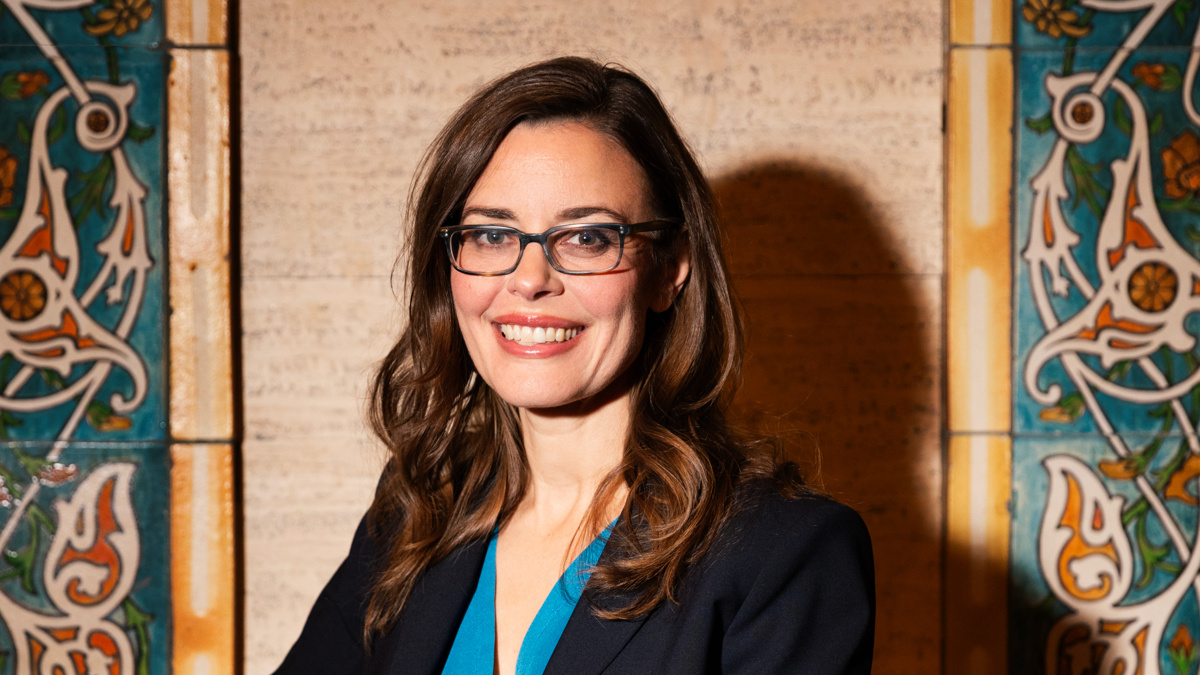Buzz

With Ragtime, Director Lear deBessonet Unpacks the ‘Grief’ and ‘Beauty’ of the American Dream
Can Ragtime, a turn-of-the-20th-century story, help us collectively make sense of the fractures in America’s 21st-century society? Lear deBessonet—Tony-nominated director of Into the Woods and outgoing artistic director of New York City Center Encores!—cannot make promises that big. But if any single show could bear such enormous pressure, it might be Ragtime.
An ambitious musical adaptation of E.L. Doctorow’s novel, the beloved work follows three fictional families pursuing life and liberty in early 20th-century America. Stephen Flaherty’s music, Lynn Ahrens’ lyrics and Terrence McNally’s book combine to paint a sweeping portrait of both the hopeful possibilities and brutal realities underpinning the pursuit of the American dream.
The guiding belief in theater as a communal gathering space shapes all of deBessonet’s work, most notably her founding of Public Works, a civic outreach program that joins professional actors with New York City residents for annual large-scale productions at the Delacorte Theater in Central Park. She brought the same ideals to Arts For EveryBody, a nationwide initiative deBessonet co-founded that brought together artists, civic leaders and health providers for community-based shows across 18 cities. And those principles will undoubtedly inform her work when she begins her tenure as Lincoln Center Theater’s artistic director next fall.
DeBessonet sat down with Broadway.com to discuss her own history with Ragtime, gathering an incredible cast led by Joshua Henry, Caissie Levy, Nichelle Lewis and Brandon Uranowitz for the gala staging, and her future ambitions as an artistic leader.

To what extent was the decision to stage Ragtime at this moment born out of the timing around the presidential election? Was that always part of the conversation?
I have wanted to direct Ragtime since I knew of its existence—basically since high school. But there was definitely an intentionality around this timing. Not in a way that is simplistic or prescriptive, but just an anticipation that this would be a moment when theater could fulfill what I believe to be its truest function. Theater allows us to gather as a community and to bring in our complicated feelings about America—about its history, its grief, its beauty—and to be able to hold all of those things together. We were all anticipating that we would need that space, and we are finding that we very much do.
Even by the high standards of New York City Center’s gala presentations, your cast is an embarrassment of riches.
If I heard that any one of these people was in a production of Ragtime somewhere else, I would travel to see them in it. Any one of them!
Your productions have been described as having a feeling of sacred communion. Why do you think that is?
That is how I put these productions together. There is a sacredness to it. And when I am building a company, to me it is a sacred invitation. I just think about: What is the dream scenario? What is the revelation of this part? And when I ask that person to play it, they will invariably say: “There is nothing I would rather do.” Brandon Uranowitz said that when he got the text about [playing Tateh], his knees buckled on the street, because he has needed to play this part for so long.
American discourse has seen a growing demonization of the “other,” particularly around immigrant populations. Do you hope staging Ragtime right now might bring some humanity back into that conversation?
That is very much reflective of our thinking. Ragtime is a period piece set in a particular moment in the early 20th century, but it feels very present and very immediate. It does not feel like the past. The past is not past, right? We also live in the uncertainty of: What will the future be? How do we hold onto hope, and hold onto the promise that America is a place where people from all over the world can come and make a life for themselves, and live peacefully together? As happens in New York City every single day—not to say anything is perfect, but there are aspects to being on a packed subway car that, to me, are the freakin’ American dream.

(Photo: Catherine Ashmore)
Is there a particular moment or number from the show that you were specifically excited to bring to life on the City Center stage?
A moment that has hung in eternity for me ever since that first production was one particular musical phrase that Coalhouse sings to Sarah in the song “New Music”: “Sarah, come down to me.” I had remembered the particular interval of the notes. But in the years between seeing that production and getting the cast album, I started to wonder: Did I imagine that? I immediately listened to the album to see if it was there, and there it was. It was so deeply imprinted. I was also excited to think about the choral singing in the show, moments where sometimes there had been offstage singing in the original production. One of the things I was interested in was allowing our company to hold more of a witnessing space on the stage in those moments.
What have the conversations looked like in rehearsals around “the American dream” and what that means to us today?
Something that we as a company have talked a lot about is how this piece holds the promise and the wound of America so closely together. And that wound is hot. Even many things that happened in the past feel very much like open wounds right now.
As to the promise and the hope, people contain that in different ways. Some people find hope in children. That is a hope that exists in this show. Some people find hope in the immigrant story, in the fact that every day people arrive believing that their life will be better in America, believing they will have safety here or will escape oppression. That is still a story that’s real. For me, I think there’s a lot of hope to be had in community. Many artists have one theme that at every point in their career they are working on, consciously or not. For me, every show that I ever make is always about community.
Your Public Works productions also incorporate community, inviting in groups from across the city.
Shaina [Taub] said to me the other day about Tateh’s dream in Ragtime, his dream of all the different children playing together: “Public Works is Tateh’s dream!”
What have been the challenges in keeping that community engagement focus at the core of your work, and how do you intend to carry forward that focus in your new role at Lincoln Center Theater?
All of the logistical obstacles have to be faced with determination and collaboration. No one person can change those things by themselves. But what I have found is that for most people who have gotten into the theater, from myself down to our friends working front of house, there is a shared value there: that the fundamental essence of theater and of making art is an act of generosity and empathy. If we’re able to connect on that basis of, “Why are we even doing this?” and really start there, then we’re able to meet those obstacles and move through them. And it is my intention to carry that value forward every day of my career while I have breath in my body.
Ragtime runs through November 10 at New York City Center.
